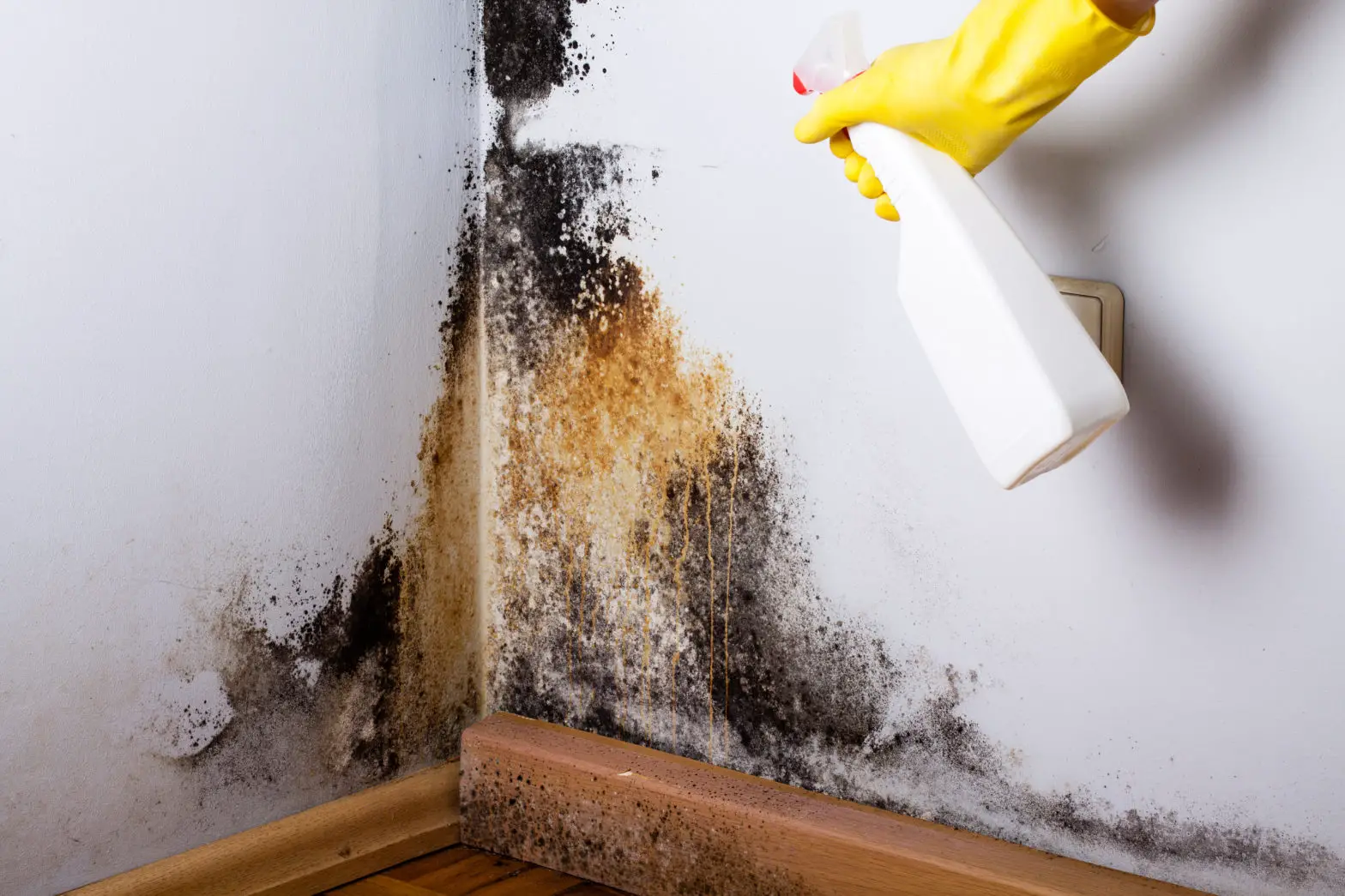Table of Contents
*This post may contain affiliate links. As an Amazon Associate we earn from qualifying purchases.
Most homes get mold, even homes that are newer. Mold happens when moisture is introduced into the environment and isn’t dried properly.
Mold is common in many areas of a home. It’s more common in basements, laundry rooms, kitchens, and bathrooms. These are the places with running water that may be leaking when you don’t even realize it. Mold removal is essential for a healthy home.
Is It Mold or Mildew?
There are differences between mold and mildew, at least in their appearance. However, both of these fungi can cause health issues, including respiratory problems.
Mold and mildew both need warmth and moisture to grow and thrive. The differences are that mildew stays on the surface and can easily be cleaned up with some soap and a scrub brush. Mold is harder to clean up and can be below the surface as well as on top.
Types of Mold in the Home
Aspergillus, Stachybotrys atra (black mold), and Cladosporium are the most common molds you’ll find inside a home. Most people don’t even notice mold unless they already have allergies or asthma. Household mold can exacerbate respiratory issues.
A mold infestation that is out of hand can also cause respiratory illnesses. Recognizing mold infestations at home can save your lungs.
- Aspergillus is a mold that is most often found in air conditioning systems and on food. It’s a mild allergen.
- Stachybotrys atra is toxic mold. It’s recognizable by its greenish-black color. It grows in walls and can even grow on lint and dust.
- Cladosporium is a more peppered green or black mold, unlike the overpowering black mold. This is a non-toxic mold, but it can still cause allergic reactions.
6 Tips for Mold Removal
Deal with mold in your home the moment you know it exists. Ignoring it won’t make it go away. To initiate mold removal in your home, here are some tips.
1. Find the Mold
You need to discover the mold to deal with it. Signs of mold aren’t always visible. The visible signs are obvious, mold spots.
Mold can have a musty smell. Black mold may smell like fresh dirt. These are the invisible signs of mold.
2. Clean It Up
You can mix a mold cleaning and killing solution at home, or you can head to your local home care store (like Menards, Lowes, or Home Depot) and buy some pre-made mold remover.
Homemade solutions include the following:
- Mix bleach (one cup) with one gallon of water. This solution can be sprayed on the mold to kill it.
- Mix borax, about one cup, with one gallon of water and scrub the wall with the solution and a brush.
- Vinegar can kill and remove mold, but not as good as bleach. White or apple cider vinegar will work, diluted with some water.
Mold spores can spread, so be careful and start cleaning outside the mold spots. Always wear a face mask while cleaning mold, so you protect your lungs.
4. Remove the Moisture
Mold and mildew need moisture to grow. Remove their source, and you can remove them. Once you’ve cleaned the mold, you need to make sure you do everything you can to get rid of the moisture.
This might mean fixing leaky pipes or getting your roof repaired. Running a dehumidifier will help remove moisture.
5. Be Aggressive About Large Infestations
Black mold is known to hide inside walls and other places that aren’t visible. If you have mold on the outside of a wall, it could be a sign that there is mold inside as well. This is especially true if it’s black mold.
If there is mold inside your walls, you’re going to be doing some damage to your home to remove it. You want to remove it and remove the moisture to keep it from coming back. Walls can be re-plastered.
If you have mold under a carpet, you will need to remove the carpet and any padding under it. If the mold is on your floors, you may need to pull boards up as well.
When dealing with a significant mold infestation, you need to wear an N-95 respirator and be adequately covered in clothing. You should also wear gloves and goggles. Keep a fan blowing out the window to help pull mold spores out of the house.
6. Bring in the Professionals
You might want to consider hiring someone that specializes in mold removal if you have a large infestation of mold or you’re finding it hard to remove the mold yourself. They will have the means to get rid of your mold problem permanently.
Start Mold Removal Now
Make it a point to check common areas where mold is likely to grow. Keep up on these inspections so you can start mold removal the moment you notice you have some in your home.


